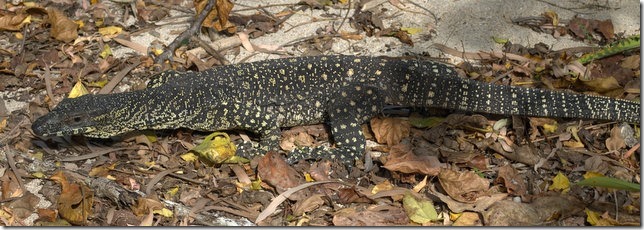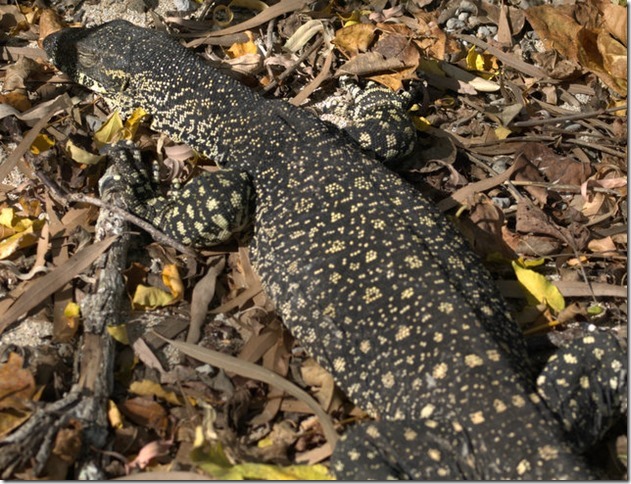Here be dragons "20:10.51S 148:57.33E"

VulcanSpirit
Richard & Alison Brunstrom
Mon 4 Aug 2014 11:22
|
In this case not the mythical beasts found decorating ancient maps and
charts but rather real living breathing ones, albeit somewhat smaller. This guy
is a Lace Monitor, Varanus varius:
 There are over 50 species in the family (27 of which come from Australia)
including the world’s largest living lizard, the venomous Komodo Dragon (V.
komodoensis) which reaches well over 3m in length. In Australia monitors
are colloquially known as goannas and some, like the lace monitor, remain quite
common. Lace monitors are big, reaching over 2m as adults and can become pests
of campgrounds and hen coops (they feed naturally on eggs). Here is the same
animal getting a spot of shut-eye in the morning sun (you can see the scale
patterning that gives it its name):
 These animals have an absolutely amazing breeding system. The female breaks
into a termite mound and lays about 30 parchment-shelled eggs inside the termite
nest. The termites rapidly repair the damage, sealing the lizard eggs unharmed
inside their nest and creating for them a humidicrib – a climate controlled warm
moist environment. Almost as amazing, the young lizards are unable to break out
of the termite mound themselves so the female goanna has to return to the
termite mound at exactly the right time and break it open again to let her
babies out. Incredible but true.
The only thing about goannas more surprising than this is that the Komodo
Dragon has been shown to occasionally reproduce parthenogentically – ie. without
mating. Other lizard species are known to do this (there is one in the USA which
has no males at all) but the Dragon is by far the largest animal known to
reproduce without sex.
|